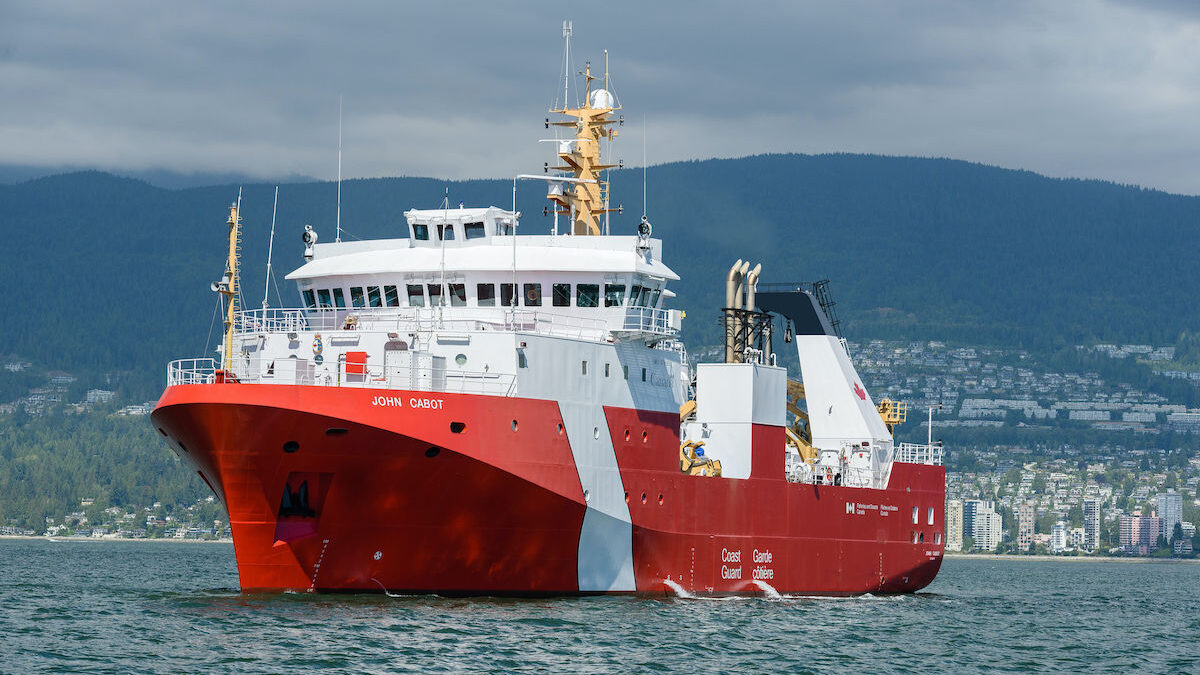Just six weeks after its official launch, the future CCGS John Cabot sailed out of English Bay in Vancouver on August 18 to begin sea trials. This is the third Offshore Fisheries Science Vessel (OFSV) built by Seaspan Shipyards under Canada’s National Shipbuilding Strategy (NSS) for the Canadian Coast Guard. CCGS John Cabot will join her sister ships already in service — the CCGS Sir John Franklin, delivered in December 2019 and now stationed in Victoria, British Columbia, and the CCGS Capt Jacques Cartier, delivered on June 2019 and currently stationed in Dartmouth, Nova Scotia.
The OFSV is fully equipped to support Fisheries and Oceans scientists in the collection and analysis of data on Canada’s marine ecosystems and the impacts of climate change. As a floating laboratory, CCGS John Cabot includes state-of-the-art systems, a deployable sensor-laden drop keel, high-tech fishing trawls and four science labs — a wet lab, a dry lab, an ocean lab and a control lab. Measuring 63.4 metres, this vessel will be one of the most advanced and capable ships of its size and type in the world.
Although the OFSVs are primarily focused on science and research, they also have the capability to support search and rescue, and environmental response and operations as required.
“Moving from launch to sea trials in record time, particularly during a global pandemic, is a testament to the incredible talent and determination of the Seaspan Shipyards team, and intense collaboration and teamwork from our supply chain partners and the Canadian Coast Guard,” said Mark Lamarre, Chief Executive Officer, Seaspan Shipyards. “Together, we are moving from strength to strength and demonstrating dramatic productivity and efficiency improvements with each ship delivered. These are exactly the outcomes intended by the architects of Canada’s National Shipbuilding Strategy, and they are the hallmarks of a modern shipyard that is firing on all cylinders.”
Sea trials is the final major phase in a shipbuilding project before delivery. According to a news release, over the next 10 days the third OFSV will go through rigorous full-scale exercises to determine performance and seaworthiness from Seaspan Shipyards, the Coast Guard and key equipment suppliers. The tests that will be conducted will help ensure that the ship operates as designed and that all systems – including mechanical, electrical, hydraulics, fishing and laboratory, communications, navigation, and fire and safety systems – are fully operational.
After completing the sea trials, the future CCGS John Cabot will be prepared for an anticipated delivery to the Canadian Coast Guard in September and then sail to her home port of St. John’s, Newfoundland and Labrador where she will take her place in the Coast Guard fleet alongside sister ships CCGS Sir John Franklin and CCGS Capt Jacques Cartier.
·

